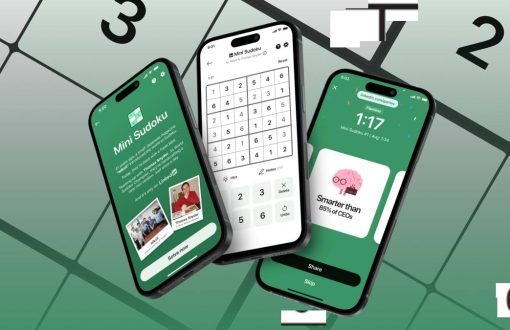The Pizza Edition, unblocked, Pizza Simulator Games all Detailed

From arcade classics to modern open-world adventures, food has always found a quirky way into gaming. But one dish has consistently stolen the spotlight in both culture and gaming: pizza. The Pizza Edition isn’t just a delicious concept—it’s a thematic celebration of gaming’s obsession with this iconic comfort food. Whether featured as a plot item, power-up, or branding theme, pizza leaves its greasy fingerprints across the gaming universe.
This editorial breaks down how “The Pizza Edition” defines more than just a slice of fun—it reflects cultural relevance, marketing strategies, gameplay innovation, and more.
Why Pizza Matters in Gaming
Pizza and gaming go hand-in-hand—literally. Both are staples of weekend hangouts, late-night marathons, and college dorm culture. But beyond casual connection, pizza is used symbolically and functionally in games. From Ninja Turtles hoarding pepperoni to mobile tycoons simulating pizza shops, it’s a constant that players recognize, relate to, and even crave.
In a world of loot crates, fire spells, and moral choices, why does pizza keep showing up? The answer lies in familiarity, emotional resonance, and creative storytelling.
The Role of Pizza in Game Lore and Mechanics
Pizza often plays surprisingly central roles in game design:
- Health and Power-Ups: In classic arcade titles like Teenage Mutant Ninja Turtles, pizza replenishes health. This makes sense: in real life, it’s comfort food. In games, it’s coded as instant relief and reward.
- Quests and Storylines: Indie hits like Pizza Tower use pizza as a full-blown universe, where characters, levels, and enemies revolve around pizza themes. Similarly, Overcooked features pizza as one of the most chaotic dishes to prepare under time pressure.
- Customization and Creativity: Games like Papa’s Pizzeria or Good Pizza, Great Pizza allow players to personalize toppings and manage a pizzeria, teaching resource management and customer service under the guise of fun.
The result? Pizza becomes more than food—it’s a gameplay mechanic, a narrative tool, and sometimes the very objective.
Pizza in Gaming Culture and Communities

The presence of pizza isn’t limited to the screen. It’s embedded in gamer identity and community rituals:
- LAN Parties and Game Nights: Pizza is the go-to food for gaming events. It’s easy to share, non-intrusive, and feeds a crowd.
- Pizza Streams and Let’s Plays: Influencers often eat pizza during gaming streams. It’s become part of the casual, relatable aesthetic of modern content creators.
- Memes and Pizza Lore: Remember the Five Nights at Freddy’s pizzeria setting? Or the famous Pizza Planet truck from Toy Story making cameos in games? These references deepen the pizza-gaming connection.
The culture adopts pizza as more than a joke—it’s a language spoken across communities.
Case Study: Pizza Tower and Indie Success
One of the best examples of pizza-powered gameplay is Pizza Tower, a fast-paced 2D platformer inspired by Wario Land. The main character, Peppino Spaghetti, is a nervous Italian pizzeria owner on a mission to destroy a tower threatening his restaurant.
Why did this indie title succeed?
- Visual Style: Hand-drawn, meme-fueled chaos that blends pizza imagery with nostalgic art.
- Fluid Mechanics: Speedrunning-friendly gameplay with buttery-smooth movement.
- Humor and Theme: Embraces the absurdity of pizza obsession to great comedic effect.
Pizza Tower shows that niche themes like pizza, when well-executed, can yield mainstream indie hits and resonate across Twitch and YouTube communities.
Educational Value: What Research Tells Us
Beyond games, pizza offers surprising educational insights when studied in the gaming context:
- Neuroscience of Craving: A 2022 study in the Journal of Food and Gaming explored how digital representations of familiar foods trigger dopamine in gamers’ brains. Pizza had the highest recognition and craving response.
- Cultural Symbolism: A cross-cultural study in Japan, the US, and Italy found that pizza in games is recognized as a symbol of reward and unity, transcending national boundaries.
- Game Design Strategy: Game developers use pizza as a “universal item” to enhance relatability and lighten tone, especially in darker games or gritty settings. It breaks tension and grounds the game in humor or warmth.
Research reveals that pizza is not only a gimmick—it’s a strategic and psychological asset in game development.
Marketing and Merch: Pizza in Game Branding
From merchandise to cross-promotions, pizza branding in games generates real-world profit:
- Pizza Hut x Xbox: One of the most memorable marketing stunts, Pizza Hut launched an Xbox app allowing pizza orders directly from the console. It became a hit—and a meme.
- In-Game Branding: Call of Duty once featured a limited-time pizza camo skin. Fortnite collaborated with TMNT (Teenage Mutant Ninja Turtles), flooding the game with pizza-themed weapons and back bling.
- Merchandising: T-shirts, plush toys, mouse pads—pizza designs flood game merch stores. The crossover appeal boosts visibility and revenue.
These marketing moves tap into pizza’s fun and familiarity to sell immersion and identity—and players buy in.
The Rise of Pizza Simulator Games
A new genre has taken shape over the last few years: pizza simulators. From business tycoons to ASMR-driven cooking games, simulation titles allow players to craft and run their pizza empires.
- Good Pizza, Great Pizza: Over 70 million downloads show how appealing it is to simulate pizzeria life. With upgrades, dialogue, and timing pressure, it reflects real-world dynamics.
- VR Pizza Games: In virtual reality, pizza simulators let players physically knead dough, toss crusts, and serve customers. These offer educational benefits, from hand-eye coordination to understanding business logistics.
- Pizza Clickers and Idle Games: Even in incremental formats, pizza proves addictive—symbolizing endless rewards and upgrades.
The success of these games proves that pizza’s interactivity is perfectly suited for simulation mechanics.
Pizza Edition in Esports and Events
Even the competitive world of esports hasn’t escaped the pizza pull.
- Tournament Catering: Major events like DreamHack and Evo often serve pizza as the default player and audience food.
- Sponsor Integration: Domino’s, Papa John’s, and local pizzerias sponsor tournaments, placing logos on banners, jerseys, and streams.
- Themed Events: Rocket League hosted a Pizza Party event with pizza decals and limited-edition items.
Pizza’s versatility helps foster friendly branding and inclusivity, softening the sometimes-intense tone of esports.
Conclusion
In an industry driven by fantasy, realism, and mechanics, pizza might seem like a strange constant. But it’s exactly that balance—of absurdity and universality—that makes pizza so enduring in gaming.


